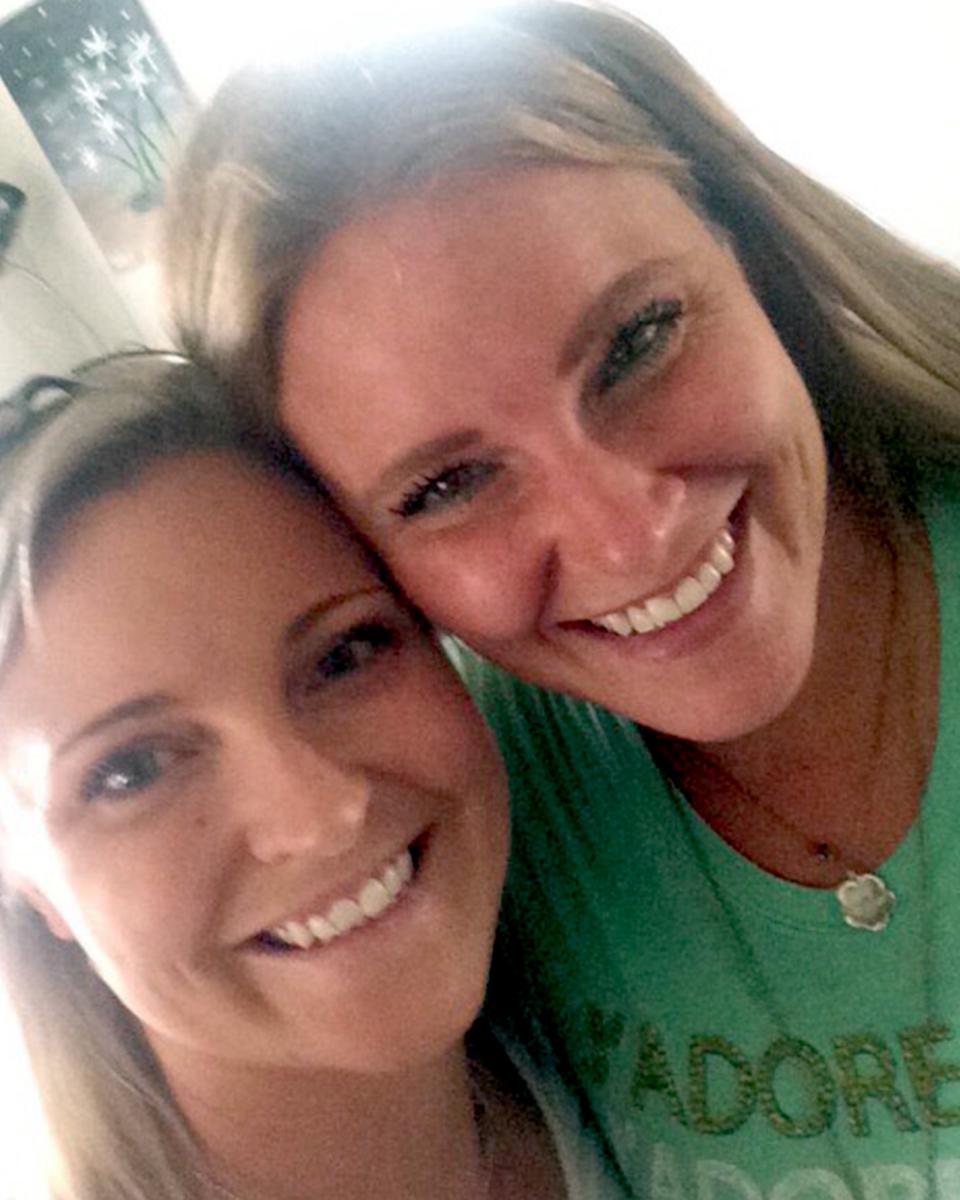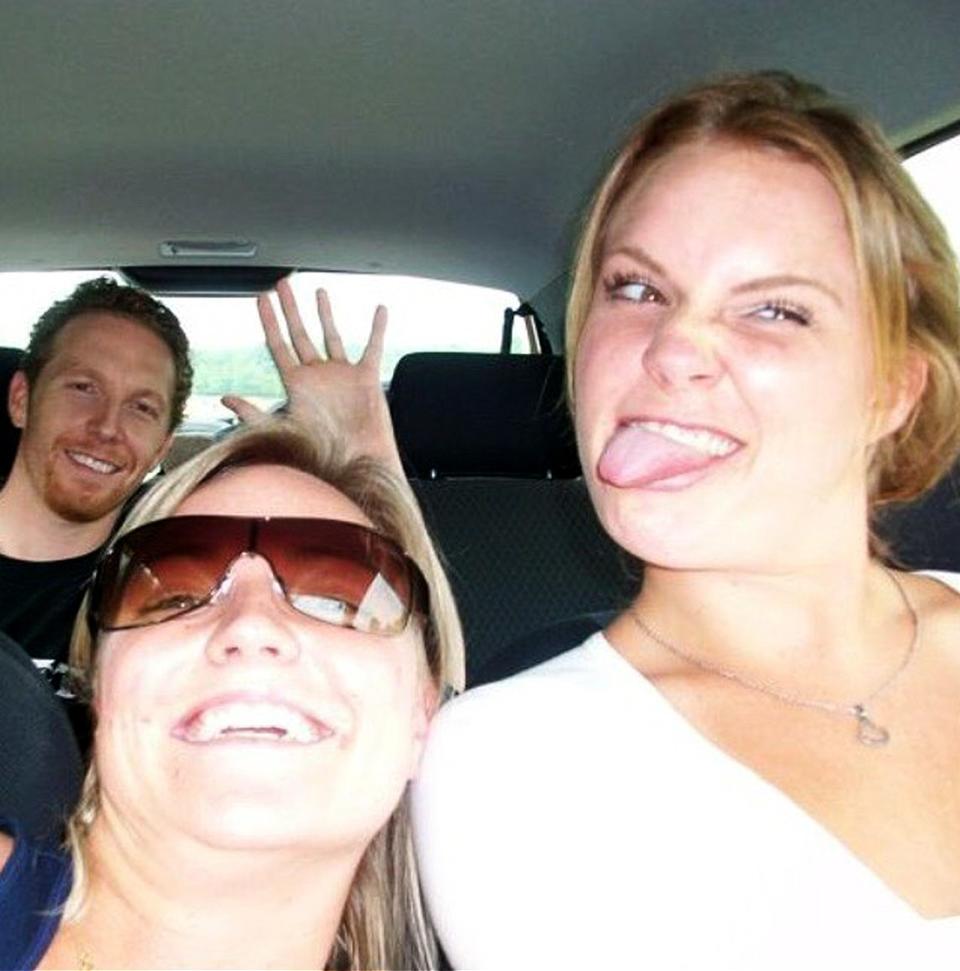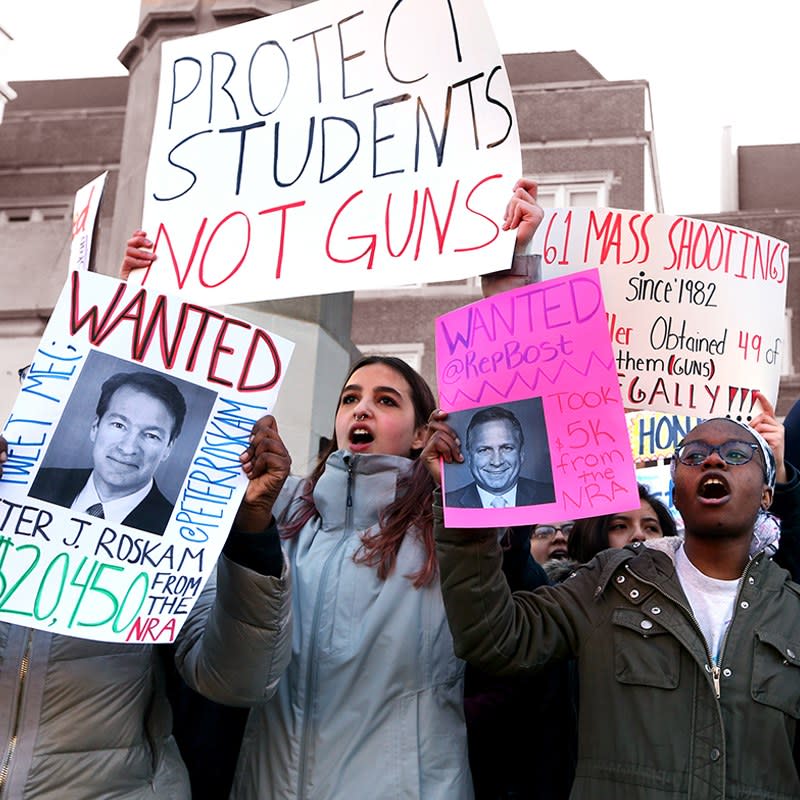Two Columbine Survivors on Life After a Mass Shooting, and Being at the Lead of 'The Columbine Generation'
“We call B.S.,” Emma Gonzales shouted, mesmerizing the crowd—and the nation—just one day after a shooter killed 17 people at Marjory Stoneman Douglas High School in Parkland, Florida. “They say tougher guns laws do not decrease gun violence. We call B.S.!”
The student walkouts that took place across the country today were a breathtaking display of activism for González, her fellow survivors, and other student crusaders. They have accomplished much since Nikolas Cruz turned their Valentine’s Day to carnage: They’ve faced down politicians from Florida’s capitol to Washington, D.C., mobilized the upcoming national March for Our Lives, (complete with merch and Oprah donations), and helped pass a law that raises the age for buying firearms in Florida from 18 to 21—NRA lawsuits be damned.
But after the march on the 24th, will the country fade back to apathy as it has after so many mass other shootings? And what will life really be like for students of Parkland after the media lights fade?
We asked sisters Heather Egeland Martin, 36, and Ashley Egeland, 34, who were both students at Columbine High School when Eric Harris and Dylan Klebold showed up with guns under their trench coats and left 15 people dead. At that time, Columbine was one of the deadliest school shootings in U.S. history; it was also the first to happen in the digital age, with real-time cell phone calls from inside the schools. Since that day in 1999, U.S. students—the Columbine Generation—have never known school to be safe from terror.
It’s been nearly 19 years since Columbine, and both Ashley and Heather are still recovering. They know it can be a long road ahead. Here’s their take on what’s happening now:
On becoming survivors:
Ashley: I was a freshman in gym class on April 20, 1999, when the next thing I knew I was being shuffled off into a little room with a couple of teachers and 12 or 13 students. I only remember little pieces—the sticky wrestling mats under me and hearing the lockers being shot off the walls. Eric and Dylan came in and turned right instead of coming for us. So we got out. Everyone was running, like a herd of people, and I was asking, “Have you seen my sister? Have you seen my sister?” But she was still inside the school.
Heather: I was a senior in choir, and about 60 of us were led into an office that was only 12 by 30 feet. We were trapped in that hot room for four or five hours with the fire alarm going off the whole time. This past summer I went back to Columbine and finally heard the debriefing from the SWAT team member who saved me. He says he had to break down the door. I don’t remember it that way, but I do remember that we took turns writing our names on the wall because we thought we were gonna die in there. When we finally got out, we walked past [students] Daniel Rohrbough and Rachel Scott. I didn’t recognize them. But I knew that they were…bodies.
Ashley: The instant I saw my sister, I ran up to hug her. It was like hugging a zombie. She didn’t even flinch. She was in complete shock. I remember holding her, thinking, I need to be the strong one. I’m OK; she’s not.” Which is funny, looking back. After that we were inseparable.
"I do remember that we took turns writing our names on the wall because we thought we were gonna die in there." —Heather Egeland Martin
Heather: We were. And then I ended up moving out [of our family home] with a bunch of friends to Lakewood, and losing my way for about nine years—dropped out of college, worked in restaurants, developed an eating disorder. But I eventually became an English teacher at Aurora Central High School in Colorado, a few blocks from the theater where 12 people were shot watching The Dark Knight Rises. After that happened [in 2012] I knew I had to do something and cofounded The Rebels Project, a group for mass shooting survivors which now has 500 members, and is sadly growing.
Ashley: When my sister left home, I felt lost. I was so connected to Columbine I didn’t get how people could move on. I never really talked about the trauma of the shooting, and eventually I turned to drugs: The first time I did meth was when I was 23. It made me feel powerful, and that was amazing because I’d been so powerless in that gym room. And I connected to the people on the street. They understood what it feels like to have your whole life ripped out from under you; we all knew that the world isn’t safe. For the next 18 years, my life turned into a complete turmoil of addiction. I was in and out of jail for stealing, robbing, lying, using and selling drugs.
My sister and I wouldn’t talk for a while, then randomly text every three to six months. She would tell me: “The reason I haven’t been in contact is I don’t want to keep thinking that I can try to save you, because only you can do that.” I’d try to get involved with her activism, because I wanted to show her, “I’m really proud of you; look how many people you’re helping.” But within days, I’d just start using again.
Then on June 22, 2016, two U.S. Marshals came and arrested me at my parents’ house. I was indicted on charges including car theft. It was actually a huge relief. I didn’t want to get high anymore or live this life. I got probation and went into treatment at The Willows at Red Oak Recovery in Asheville, North Carolina. When I showed up, I was 32. For the first time in 18 years, I felt safe enough to talk about Columbine. I broke down. Without my drugs, I was still that 14-year-old girl at the gym. I had so much guilt for surviving the shooting and guilt for getting a second chance, and I hated everything that my addiction drove me to do. But in recovery I was encouraged to talk about everything, and I learned I wasn’t the only one who’d done shameful things because of drugs and trauma. Now I work at The Willows with alumni and will be celebrating two years of sobriety this June.

On facing gun violence now:
Heather: In September I was teaching my class, and suddenly there was an announcement: “We’re going into a red lockdown,” which meant there might be threats of an active shooter. I led all the kids into the closet. I tried to remain calm. I told them to grab their phones and text their parents, because I hadn’t been able to do that that day in Columbine and mine had thought I was dead. Then I listened for gunshots.
It turned out to be a shooting outside a block away, and the alert was downgraded quickly. But we actually had another lockdown just recently because there was a student in the school with a gun. I know, right? We got the red alert. So I brought my class into the closet again and we sat in there for about an hour. My students know my story and asked me if I was all right. I was fine, but I definitely still have flashbacks, seeing bodies out of the corner of my eye.
On "forgotten" gun violence:
Heather: When a mass school shooting happens, it affects my students. Our school is 60-ish percent hispanic, 20 to 25 percent African American and African because we have a very high refugee population. There is a lot of gang violence in my area. I’ve talked to students who’ve seen drive-bys. Gun violence is a pretty normal part of their life. And those stories are not all over the news. That violence affects our classrooms too. Because I’ve been through trauma, it helps me understand why. If you have a kid who keeps acting out in class, it could be because his seat has his back to the door—they don’t like to think they can’t see a shooter coming. When kids talk back or lash out, it could be because they’re going into fight-or-flight mode; they are so used to being ready for anything. If you confront them, they can get defensive. I remember the first couple of times I asked a kid who kept talking or was throwing things, “What’s going on? Tell me what’s happening.” And what I’ve heard have been things like, “My home life is not great.” “Something going on outside of school. On the streets.” Or, “I’ve fled civil war.” Sometimes I’m like, Really? What they have been through is incredible. I love my students. They’re amazing and resilient. I’m not about comparing trauma, but we need to address this violence too.
Heather: It seems very strange that this [arming educators] is viewed as a solution. I don’t feel comfortable with a gun; I know teachers who don’t even want to have a pair of scissors [for fear they could turn into a weapon]! There’s too much that can go wrong. For me, safety exists on multiple levels. You can have metal detectors and armed officers, but in order for the students to really feel safe it has to do with teachers building relationships with them. I think people discount how important this is. My students and I talk about safety a lot. We have those conversations.

On what's ahead for the Parkland students:
Ashley: It’s a long, long road to healing after something like this. If I could give advice, I would say: Do not lose the connection with people who understand what you’ve been through, who make you feel safe. If that means marching on Washington with people who have the same goals as you, do that. Fight for what you believe in!
Heather: What we've seen personally, and from working with survivors who join the Rebels Project, is that after surviving a shooting, everyone thinks they're fine, everyone believes they will get back to normal—that’s the cycle. Within three to six months is when we’ll start hearing from them, or maybe after a year. Then people will start wondering, Why am I still feeling so anxious? Why am I having nightmares? Sadly, they’ll start questioning their sanity. Our message is: “You’re normal for this community.” These students are just at the beginning of their healing. Already, I’m in awe of them. My teacher heart is so proud of them. My survivor heart is so proud of them. It’s just amazing what they’re doing, what they’re standing up for. And I think this is different. These students are giving me hope.


